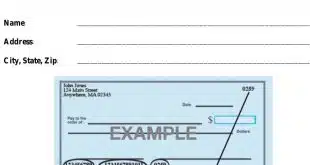Among five major financial products, only prepaid cards grew in consumer ownership last year, according to new findings from Javelin Strategy & Research.
Pleasanton, Calif.-based Javelin assessed prepaid cards’ current market position and prospects through a random online survey last October of 3,210 U.S. adults, and compared many of the findings with those from a similar study in September 2010. In the wake of the recession and more regulation, Javelin found fewer consumers reporting they had a checking account (88% in 2011 vs. 92% in 2010), a general-purpose credit card (67% vs. 74%), a major debit card (66% vs. 78%), or a personal savings account (62% vs. 72%).
But prepaid cards grew, though their customer base is still much smaller than those of mainstream payment cards and demand-deposit accounts: 13% of consumers reported having a prepaid card in 2011, up from 11% in 2010.
The recession cut deeply into banks’ earnings, which caused many to add or increase fees on consumer products, with attrition being the predictable result. “The economy really cut down the number of people who have checking accounts,” says Beth Robertson, director of payments research at Javelin, adding that reduced ownership of debit cards is no surprise since banks issue them to checking-account holders.
Plus, more regulation through a tightened Regulation E governing checking accounts and the Durbin Amendment regulating big banks’ debit card interchange gave financial institutions more reasons to impose new fees on their demand-deposit accounts. “Many banks, especially the larger ones, eliminated free checking, and that’s caused less people to have a checking account,” Robertson says. On the credit side, banks still remain risk-averse in the wake of the recession, she says.
Prepaid cards, however, are one bright spot in the consumer product lineup, though they’re still mainly the province of the underbanked, those Javelin defines as not having a personal or joint checking account; the unbanked, those with no financial accounts whatsoever; and young and lower-income consumers. While only 13% of all consumers reported owning a prepaid or payroll card last year, 18% of underbanked consumers did, as did 18% of the so-called Generation Y (those born between 1979 and 1999). Seventeen percent of consumers with annual incomes under $15,000 carried a prepaid card vs. 11% in the $100,000 to $149,999 bracket.
How to make prepaid cards more popular? Asked which features would encourage greater usage, 49% of all respondents cited rewards. (And, in reference to their preferred payment option, no matter what it was, 26% said earning rewards was their primary reason for using it.) Rewards even trumped fewer or lower fees, which 33% of all respondents said would boost their prepaid card usage.
Prepaid cards represent an opportunity for banks to develop customer bases among young adults who at the moment have few financial relationships. Some 32% of Gen Y members reported getting their prepaid cards from a merchant or retailer, below the 37% figure for all consumers, while 31% of the young adults got their repaid cards from a bank, higher than the 27% figure for all consumers.
Robertson notes that prepaid cards get a lot of usage from college students, who because of regulations aren’t being solicited as actively as they once were for credit cards. “This is a good opportunity to begin a relationship with somebody who could evolve into a more extensive and valuable traditional banking relationship as they mature and you need a wider array of services,” she says.
Despite prepaid cards’ gains, cash still remains highly popular with underbanked consumers, cited by 72% of that cohort as their most frequently used payment option versus 21% for all consumers. But prepaid cards are quite popular among the underbanked when shopping online. Some 56% of underbanked consumers cited online shopping as the most common thing for which they use a prepaid card, far more than any other type of purchase. “I do think it’s because they don\'t have alternatives,” says Robertson. “A lot of underbanked are users of cash, and in most online cases you can\'t use cash.”







